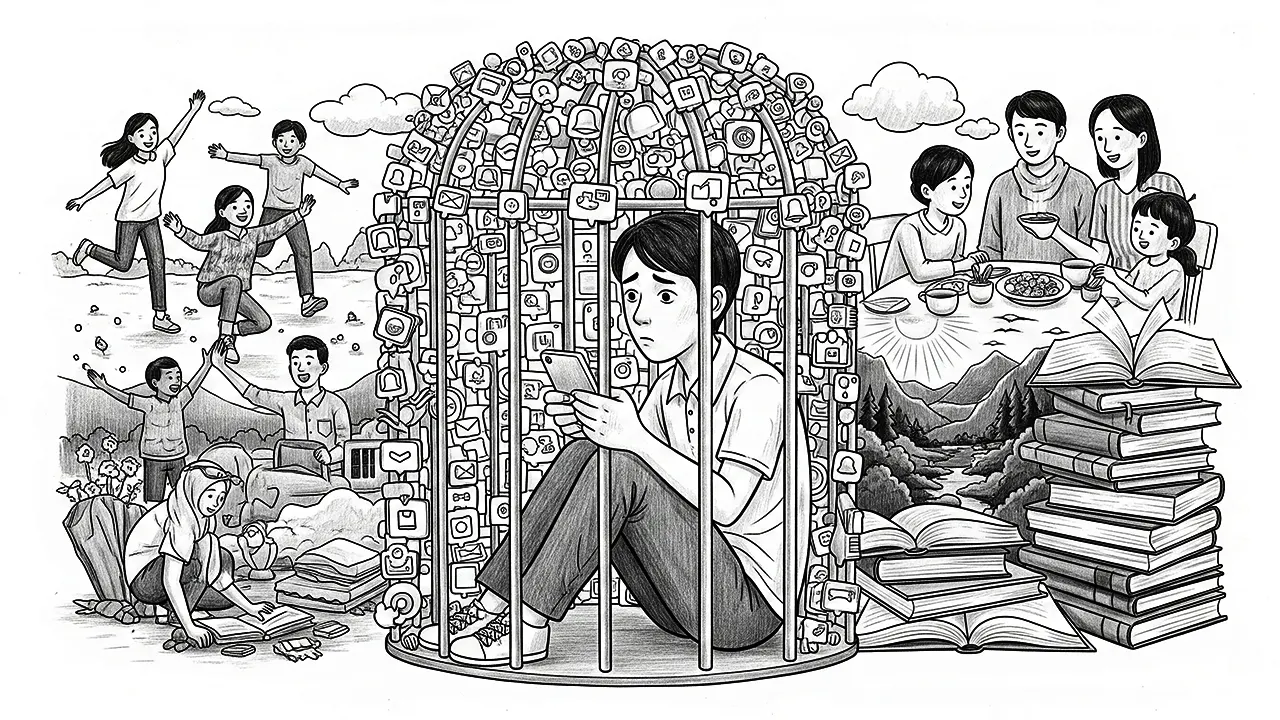In today’s rapidly evolving digital era, technology has become a central component of human life, especially among young people. Its integration into daily routines is seamless, offering convenience, connection, and endless streams of entertainment. However, this technological immersion also comes with significant consequences, particularly in the realm of adolescent mental health.
Teenagers are increasingly spending their time with electronic devices, often at the expense of physical, social, and emotional development. This phenomenon, known as gadget or device addiction, refers to the excessive and uncontrolled use of digital devices that interferes with daily functioning.
While the availability of information and communication through screens can be beneficial, overdependence can lead to behavioral and psychological concerns that deserve urgent attention.
Adolescence is a pivotal stage of life, marked by dynamic changes in physical, emotional, and cognitive development. The transition from childhood to adulthood is both promising and challenging.
During this phase, social interaction, parental guidance, and mental stimulation play essential roles in shaping the personality and emotional resilience of teenagers. Unfortunately, prolonged exposure to digital screens is disrupting this natural developmental process.
Teenagers’ Actual Usage of Mobile Phones
One of the most pressing issues caused by gadget addiction is the rise of individualism. Teenagers often prefer to stare at screens rather than engage with those around them. Over time, this behavior leads to weakened social bonds and increased isolation.
Family relationships also suffer, as both parents and children rely more on digital communication than face-to-face interaction. The sense of emotional connection, once built through conversation and shared experiences, is slowly being replaced by impersonal exchanges via chat and social media.
Recent data from the Indonesia National Adolescent Mental Health Survey (I-NAMHS) 2024 reveals a concerning picture of youth mental health in the country. The survey found that approximately 15.5 million teenagers — 34.9% of the adolescent population — experience mental health challenges, including anxiety (3.7%), major depression (1.0%), behavioral disorders (0.9%), post-traumatic stress disorder (0.5%), and ADHD (0.5%).
Social disconnection is also significant. Over 64.7% of teens reported difficulties in family relationships, 41.1% had trouble connecting with peers, and 39.3% experienced problems in school or the workplace.
Despite this, only 2.6% of affected adolescents had ever accessed mental health support or counseling. This gap is largely due to a lack of available mental health professionals, especially outside Java, and the persistent stigma surrounding psychological help.
Teenager’s Mental Health Affected by Device Addiction
Addiction to gadgets can have a profoundly negative impact on teenage mental health. The consequences manifest across emotional, social, cognitive, and even physical domains.
One of the most significant effects is the decline in social skills. Teenagers who are heavily dependent on digital devices often become less socially competent and may feel uncomfortable or anxious in face-to-face interactions. For instance, they may lack the confidence to engage with classmates or participate in community activities.
Additionally, the risk of developing mental disorders increases significantly. Teenagers addicted to their gadgets are more susceptible to conditions such as anxiety, depression, and other emotional disturbances, often due to isolation and overstimulation from constant online content.
Cognitive abilities may also decline. Excessive screen time can lead to decreased concentration, reduced memory retention, and overall academic underperformance. Teenagers may find it difficult to focus on schoolwork or maintain consistent study habits.
From a physical standpoint, vision problems such as eye strain, blurred vision, and discomfort are common due to prolonged exposure to screens.
Sleep is also affected. Sleep disturbances are often the result of blue light emitted from screens, which suppresses melatonin production — the hormone responsible for regulating sleep. As a result, teens may struggle with insomnia, fatigue, and poor daytime functioning.
Poor posture is another concern. Extended use of gadgets can lead to a hunched back or forward head posture, which not only causes discomfort but may also restrict breathing and lead to long-term musculoskeletal issues.
Perhaps most concerning is the emotional disconnect that may develop. Teens may begin to feel alienated from their environment, leading to deeper emotional issues such as depression. Over time, they may become psychologically dependent on their devices, believing they cannot function without them.
Ways to Stop Teenagers from Using Their Phones Too Much
To minimize the negative impacts of gadget addiction on teenage mental health, a multi-faceted approach is essential. Here are several effective strategies:
Set boundaries and screen time limits.
Parents and teenagers should collaborate to set reasonable limits on daily gadget use. Structured time management helps teenagers understand when to study, when to help with household responsibilities, and when it is appropriate to use their devices recreationally. This balance supports both academic success and healthy habits.
Encourage physical activity.
Promoting regular exercise helps reduce reliance on gadgets. Whether through sports, dance, outdoor adventures, or simple walking routines, physical activity can significantly improve overall well-being and foster skills that extend beyond academics.
Foster social interaction.
Teenagers should be encouraged to participate in real-world social activities. Joining campus clubs, organizing events, or participating in community service helps develop social confidence and empathy while reducing screen dependency.
Raise awareness among teens and parents.
Education about the psychological and physical dangers of gadget addiction is crucial. Parents must remain informed and attentive to behavioral shifts in their children. This includes discussing digital habits openly and offering support rather than punishment. Teenagers, on the other hand, must be guided to understand the value of real-world engagement over virtual gratification.
Strengthen parental involvement and supervision.
Parental guidance remains vital. Monitoring digital usage, modeling healthy behavior, and maintaining active involvement in a teenager’s day-to-day life can protect against harmful patterns. Even as teenagers seek independence, they still require consistent support and guidance from adults to make healthy decisions.
Conclusion
Addiction to electronic devices presents a serious threat to the mental health of teenagers. Without proper intervention, this dependency can disrupt academic success, damage personal relationships, impair physical health, and hinder emotional development.
However, through a collective and proactive approach, these risks can be significantly mitigated. Parents must take an active role in guiding and supervising their children’s digital use, while schools and universities must create environments that promote digital literacy and mental wellness. Educational institutions should also equip teachers with the tools to model and teach responsible technology use.
Campuses bear further responsibility. They must educate students on healthy digital habits, monitor off-campus gadget use where appropriate, and enforce responsible device policies. University staff and faculty should integrate lessons on digital balance into various subjects and student life programs.
The government, too, plays a crucial role. It holds the authority to regulate digital consumption among young people by enforcing policies that promote responsible gadget use. This can include integrating digital well-being education into school curricula, launching public awareness campaigns, and investing in accessible mental health services.
By combining parental oversight, educational support, and government regulation, society can help teenagers develop a healthier relationship with technology. When used wisely, technology can be a powerful tool for learning and connection. But without boundaries, it risks becoming a barrier to a teenager’s growth and well-being.
Supervisor : Dr. Iman Sastra Mihajat Ph.D








